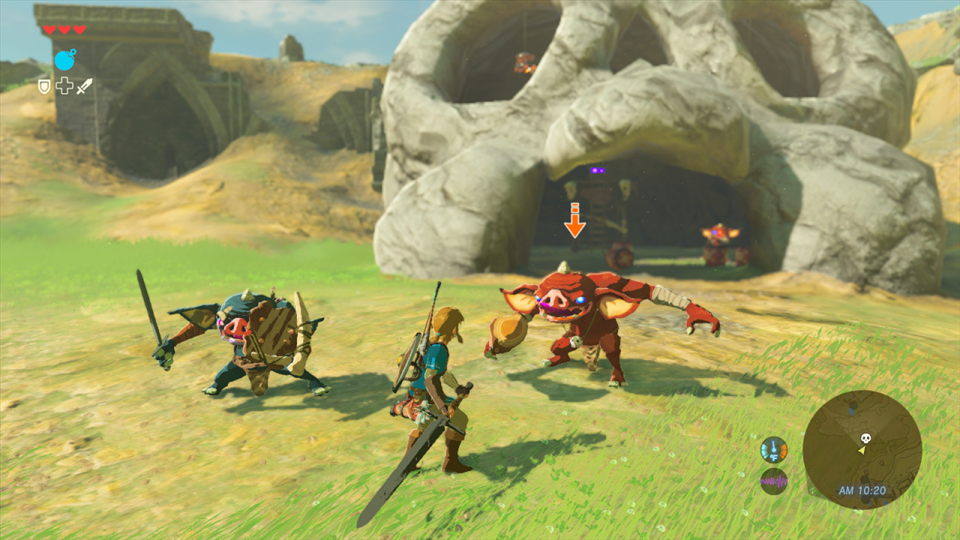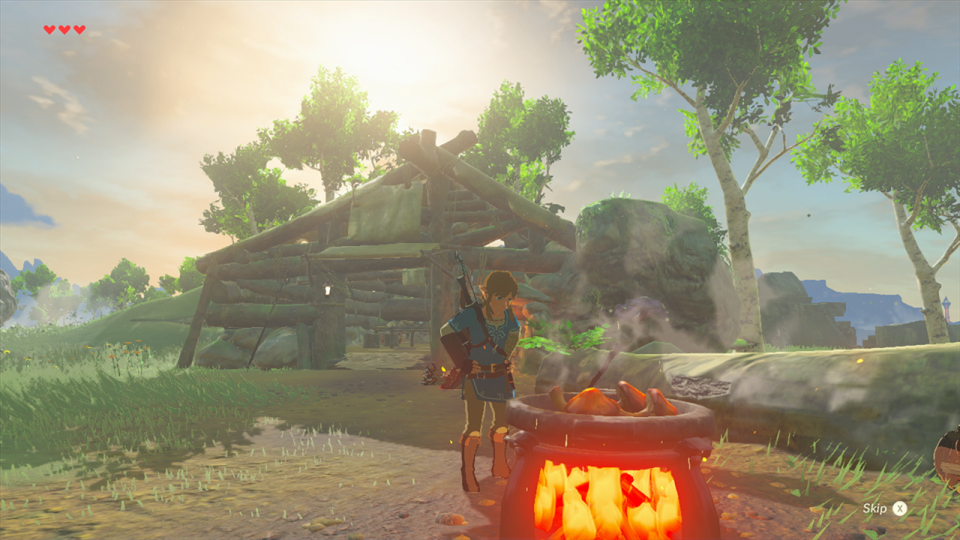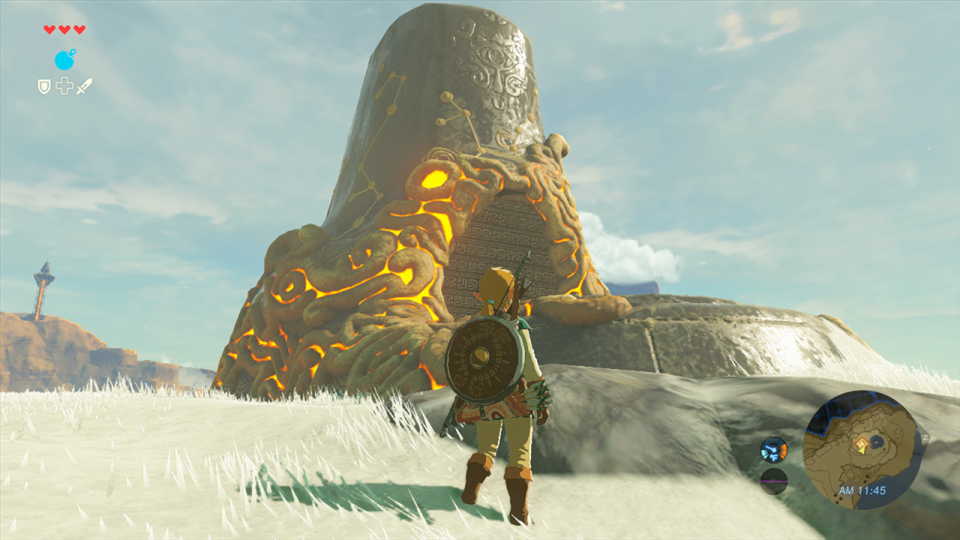'Breath of the Wild' is the boldest 'Zelda' game in years
The series has finally been reinvented, but still feels intimately familiar.

Nintendo wasn't lying, or even exaggerating. There really has never been a Legend of Zelda game quite like Breath of the Wild, and the series should be all the better for it. I've extensively played (if not quite finished) every major Zelda game, but that familiarity with the series rarely came in handy throughout the 45-minute demo I played at E3 today. I was confused and disoriented, not quite familiar with how I should be interacting with my surroundings -- much like Link himself after being awakened in a shrine with no clear direction on where to go.
That's not a bad thing -- in fact, it's just what the series needed. Ocarina of Time set up a play style that the subsequent Zelda games have rarely deviated from. New moves were added, controls were tightened, but it all felt like iterations on the same model. In Breath of the Wild, that's largely out the window. Yes, you can still lock onto enemies, parry attacks with your shield, dodge and slash with your sword, but there's a wide variety of different weapons at your disposal now. You can pick up a broken tree branch and use it to attack for starters, beat down a few goblins, steal their clubs, grab a wood-cutting ax and more.
It's easy to swap between weapons, which is good, because there's a new durability system at play here. Every weapon you have can get damaged and eventually break if you're not careful. And if your goblin club is nearly broken, you can just chuck it at an enemy to do double damage before it finally falls apart.

The world of Hyrule is even more significantly changed than combat. As Nintendo has mentioned already, Breath of the Wild is a massive open-world that you can explore in any way you want. Whatever you see, you can go to -- enemies or some environmental challenges might stop you along the way, but you can try. I only got to see a portion of the Great Plateau in the 20 minutes of I had to explore the area, and Nintendo says that's only one percent of the game's total area.
Beyond just size is what you can do in Hyrule. First off, you can jump whenever you want, only the second time you've been able to do so in a Zelda game. (1989's Zelda 2: The Adventure of Link was the first.) You can also climb trees and cliffs and basically interact with the environment in a host of ways -- once you get your hands on that axe, you can start felling trees, for example.
And once that tree is down, you can chop it up and collect wood; once you take down an enemy, you can harvest its weapons or armor to make a shield. The amount of stuff you can collect in the environment is vast and varied, and it'll all come in handy. In particular, you're going to want to keep your eyes peeled for various food items, because you won't find hearts in bushes anymore. You'll instead need to collect food from around the world and save it for when you need a heart boost -- you can even combine ingredients and cook it to get a bigger boost.

This is all to say that there's tons to do in Breath of the Wild before you even dig into the game's story. But fortunately, for those who want to get into the meat of the plot, it isn't long before Link starts getting nudged down his path. The game may not hold your hand in terms of teaching you mechanics, but it doesn't take long to get into the story if that's how you want to play it. Following the direction of a voice in his head, Link soon raises a variety of shrine all around the world of Hyrule to start exploring. At a high level, it looks like these shrines will be the game's version of dungeons, but you can play them in any order you want.
You'll meet an old man on the plateau (who looks suspiciously like the King of Hyrule in The Wind Waker), and he tells you that you'll need his little paragliding tool to get off the plateau without falling to your death. He then asks you to head into the shrine that's accessible on the plateau to get some treasure you can barter for that paraglider. So that first encounter is a bit scripted, and unfortunately I didn't actually get to play the Shrine and see what comes next, but a Nintendo representative assured me that you don't need to follow the game in any prescribed path.

Ultimately, there's enough familiar here to make the game feel like a classic entry into the Zelda series -- not 15 minutes into the game, there was the first glance of the malevolent spirit of Ganon encircling Hyrule Castle. But the massive, interactive, living world coupled with the mysterious introduction to the story (Link is resurrected after 100 years!) makes for a game that feels significantly different than any Zelda that preceded it.
What's perhaps most impressive is that Nintendo pulled this off not by putting Hyrule mostly underwater or by moving things into the clouds, as it did in The Wind Waker and Skyward Sword, respectively. The classic overworld is still here -- it's just more expansive, varied and interactive than ever before. If Nintendo can keep this feeling alive throughout the entirety of the game, the company will have managed to pull off the biggest reinvention of the series since the release of Ocarina of Time nearly 20 years ago.
Follow all the news from E3 2016 here!
